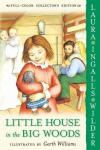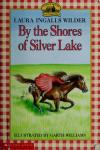Elementary
Little House in the Big Woods
The first in the famous "Little House" series (circa early 1870s), this book tells of Laura's early childhood in rural Wisconsin. A wonderful story in itself about life in a simpler time, Laura explains in fascinating detail many of the tasks necessary to sustain life, prepare for winter, etc. We are introduced to cheese and butter making, the preparing of meats for winter-storage, and much more. Laura, her two sisters and her Ma and Pa live in the midst of a large forest where the closest neighbors are wolves and deer (and an occasional bear).
By the Shores of Silver Lake
Continue the adventures of the Ingalls family as they make yet another move, working in a railroad camp, and deal with Mary's recent loss of sight. The reader may discern that Laura begins to develop her story-telling abilities by faithfully following her Pa's request to be Mary's "eyes". The railroad workers move along and the Ingalls family stick it out for one very quiet winter before being present for the establishment of a brand new town.


